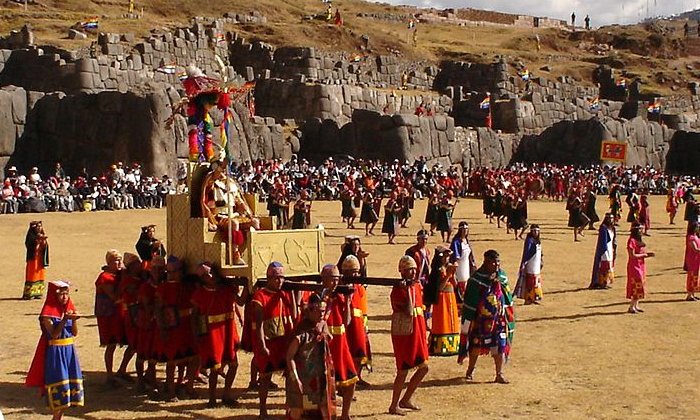What Was Inti Raymi And Why Was It Celebrated By Inca?
Conny Waters - AncientPages.com - Inti Raymi is Inca’s Sun Festival, traditionally celebrated at Cuzco on June 24, which marks the winter solstice, the shortest day of the year - the Inca New Year (in regions south of the equator, the Gregorian months, June and July are winter months.)
Inti Raymi (Festival of the Sun) at Sacsayhuaman,Cusco. Image credit: Cyntia Motta - CC BY-SA 3.0
It is an ancient Inca religious celebration of "The Inti or Sun". Formerly the Inti Raymi lasted about 15 days, and the last Inti Raymi - carried out with the presence of the Inca Emperor - was in the year 1535; one year before ¨The Spanish Conquest¨ in 1536.
Today, it is a theatrical representation. Thousands of Cuzco and people from all over the world come together to this event, which is one of the most important cultural and traditional manifestations in this part of the world.
According to this ancient tradition, Inca honors the beginning of the new solar year, a time when the Sun makes its come back to provide warmth for all life. It is the rebirth of the Sun, the Inca royalty, and the mythical origin of the Inca people.
The name Inti Raymi comes from the Quechua language: inti means “sun” and raymi means “festival.”
During the Inca Empire, only Inca males were allowed to participate in the festival, during which offerings were made to the Sun, god Viracocha and the thunder god. The participants made a large number of wooden statues dressed in fine clothes; at the end of the festival, the statues were burned.
The rituals associated with Inti Raymi are still performed and take place in front of huge crowds on this particular day each June at Cuzco, Peru.
The ancient fortress-ruins of Sacsayhuaman, in the hills overlooking the city, are filled that day with a very special atmosphere of Andean music, dance, a simulation of animal sacrifice (which originally served as an offering to the Sun God), parades, and ceremonies in the ancient Quechua tongue.
The lead figure is "The Inca" - the Emperor, supreme ruler of the Incan Empire. Carried on a platform and dressed in regal red and gold, the Emperor leads the ceremony with gestures and incantations to the Sun. During the festival, 500 actors representing Inca nobility are dressed in traditional clothes adorned with silver and gold. One actor portraying the Sapa Inca blesses the ceremony and makes a speech in the native language Quechua, to honor the Sun.
According to Spanish chronicler, soldier, and poet Garcilaso de la Vega, the festival Inti Raymi was created by the ninth Sapa Inca Pachacuti in 1412 and lasted for nine days.
The last Inti Raymi with the Inca Emperor's presence was carried out in 1535, after which the Spanish and Catholic priests banned it for many years at least.
Little is known about the details of the Inti Raymi celebration, and most of what we see today is pieced together from archaeological findings and of memories and practices that have been passed on from one generation to another to keep the ancient traditions alive.
As Quechua is not a written language, there are no written records of the rituals' origins. Among South American greatest celebrations, Inti Raymi is the second only to the festival in Rio de Janeiro.
Written by Conny Waters - AncientPages.com Staff Writer
Copyright © AncientPages.com All rights reserved. This material may not be published, broadcast, rewritten or redistributed in whole or part without the express written permission of AncientPages.com
Expand for referencesMore From Ancient Pages
-
 Mystery Of Count St. Germain – He Claimed To Have Lived For Several Centuries
Featured Stories | Sep 4, 2014
Mystery Of Count St. Germain – He Claimed To Have Lived For Several Centuries
Featured Stories | Sep 4, 2014 -
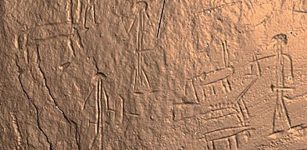 Ancient Rock Engravings Unveil Intriguing Insights Into Human Cultures
Archaeology | Jul 4, 2023
Ancient Rock Engravings Unveil Intriguing Insights Into Human Cultures
Archaeology | Jul 4, 2023 -
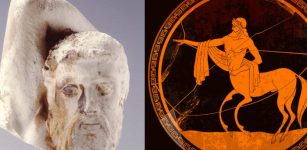 Why Is This Centaur Head A Scientific Mystery?
Archaeology | Jan 19, 2024
Why Is This Centaur Head A Scientific Mystery?
Archaeology | Jan 19, 2024 -
 Stunning Discovery Of 1,000-Year-Old Knight’s Sword From Reign Of Poland’s First King Bolesław The Brave
Archaeology | Jul 28, 2022
Stunning Discovery Of 1,000-Year-Old Knight’s Sword From Reign Of Poland’s First King Bolesław The Brave
Archaeology | Jul 28, 2022 -
 Orang Bunian: Mysterious Invisible Whistle People Living In Forests In Malay Folklore
Featured Stories | Jul 15, 2016
Orang Bunian: Mysterious Invisible Whistle People Living In Forests In Malay Folklore
Featured Stories | Jul 15, 2016 -
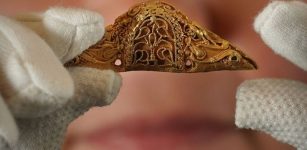 Exceptionally Rare 1,300-Year-Old Golden Pommel Found In Blairdrummond, Scotland
Archaeology | Nov 1, 2022
Exceptionally Rare 1,300-Year-Old Golden Pommel Found In Blairdrummond, Scotland
Archaeology | Nov 1, 2022 -
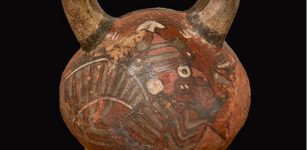 Colors On These Ancient Pots Hint At The Power Of An Empire
Archaeology | Mar 7, 2023
Colors On These Ancient Pots Hint At The Power Of An Empire
Archaeology | Mar 7, 2023 -
 Remains Of Ancient Predators Shed Light On How Humans Did Or Didn’t Find Food
Archaeology | May 2, 2022
Remains Of Ancient Predators Shed Light On How Humans Did Or Didn’t Find Food
Archaeology | May 2, 2022 -
 Durendal – Magical Sword Of Knight Roland That Cut Stone Boulders With A Single Strike
Featured Stories | Jan 19, 2022
Durendal – Magical Sword Of Knight Roland That Cut Stone Boulders With A Single Strike
Featured Stories | Jan 19, 2022 -
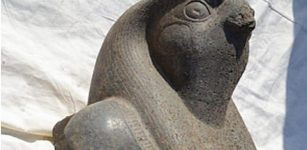 Colossus Of Standing Falcon-Headed God Horus Unearthed In Egypt’s Luxor
Archaeology | Jan 6, 2020
Colossus Of Standing Falcon-Headed God Horus Unearthed In Egypt’s Luxor
Archaeology | Jan 6, 2020 -
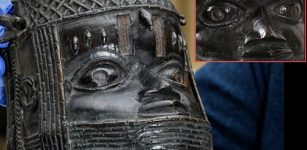 Benin Bronze Sculpture Looted By British Soldiers In Nigeria – Returns Home
Archaeology | Apr 2, 2021
Benin Bronze Sculpture Looted By British Soldiers In Nigeria – Returns Home
Archaeology | Apr 2, 2021 -
 Two-Story Houses With Balconies Unearthed In Ancient City Of Pompeii, Italy
Archaeology | May 18, 2018
Two-Story Houses With Balconies Unearthed In Ancient City Of Pompeii, Italy
Archaeology | May 18, 2018 -
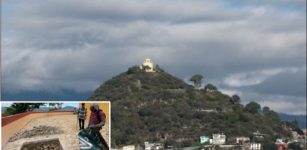 Long-Lost Legendary Ancient Temple Discovered On San Miguel Hill In Mexico
Archaeology | Oct 20, 2023
Long-Lost Legendary Ancient Temple Discovered On San Miguel Hill In Mexico
Archaeology | Oct 20, 2023 -
 On This Day In History: The ‘Canterbury Tales’ Read For The First Time At Richard II’s Court – On Apr 17, 1397
News | Apr 17, 2017
On This Day In History: The ‘Canterbury Tales’ Read For The First Time At Richard II’s Court – On Apr 17, 1397
News | Apr 17, 2017 -
 Aillén Mac Midgna: Evil Goblin Who Terrorized Sacred Hill Of Tara
Celtic Mythology | Mar 28, 2023
Aillén Mac Midgna: Evil Goblin Who Terrorized Sacred Hill Of Tara
Celtic Mythology | Mar 28, 2023 -
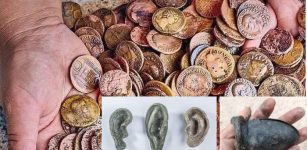 Extraordinary Etruscan And Roman Treasure Trove Unearthed In San Casciano dei Bagni, Italy
Archaeology | Aug 12, 2022
Extraordinary Etruscan And Roman Treasure Trove Unearthed In San Casciano dei Bagni, Italy
Archaeology | Aug 12, 2022 -
 Mystery How Humans Lost Their Body Hair Solved By Scientists
Archaeology | Jan 4, 2023
Mystery How Humans Lost Their Body Hair Solved By Scientists
Archaeology | Jan 4, 2023 -
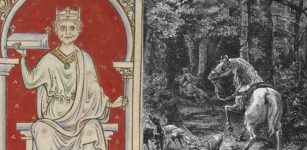 Was King William II Murdered In The New Forest?
Featured Stories | Aug 5, 2021
Was King William II Murdered In The New Forest?
Featured Stories | Aug 5, 2021 -
 Mysterious Denisovans – New Study Offers New Evidence
Fossils | Mar 25, 2021
Mysterious Denisovans – New Study Offers New Evidence
Fossils | Mar 25, 2021 -
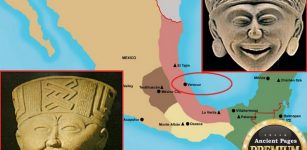 Curious Pre-Columbian Clay Figurines With Smiling Faces From Veracruz
Artifacts | Jan 29, 2018
Curious Pre-Columbian Clay Figurines With Smiling Faces From Veracruz
Artifacts | Jan 29, 2018

